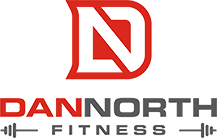Lunges are one the best exercises you can do for your lower body because they:
- Challenge your core stabilizers
- Challenge your overall balance and coordination
- Correct imbalances
- Build muscle
- Are easier to learn than bilateral movements like squats and deadlifts
They’re also one of the most commonly butchered exercises you’ll see in the gym. If you want to be able to perform lunges optimally, you’ll need:
- Ankle mobility: Your ankles need to have a certain degree of dorsiflexion (when your foot it flexed).
- Hip mobility: Your hips will be flexing and extending during lunges and without adequate hip mobility, your body will compensate and put itself in vulnerable positions.
MISTAKE #1 : HYPEREXTENDING THE LOWER BACK
Usually you’ll see people push their lower backs forward excessively, causing hyperextension in the lumbar spine. This typically happens when you try to keep your torso upright throughout the lunge, but don’t have the hip mobility to go through the full range of motion without compensating with your lower back.
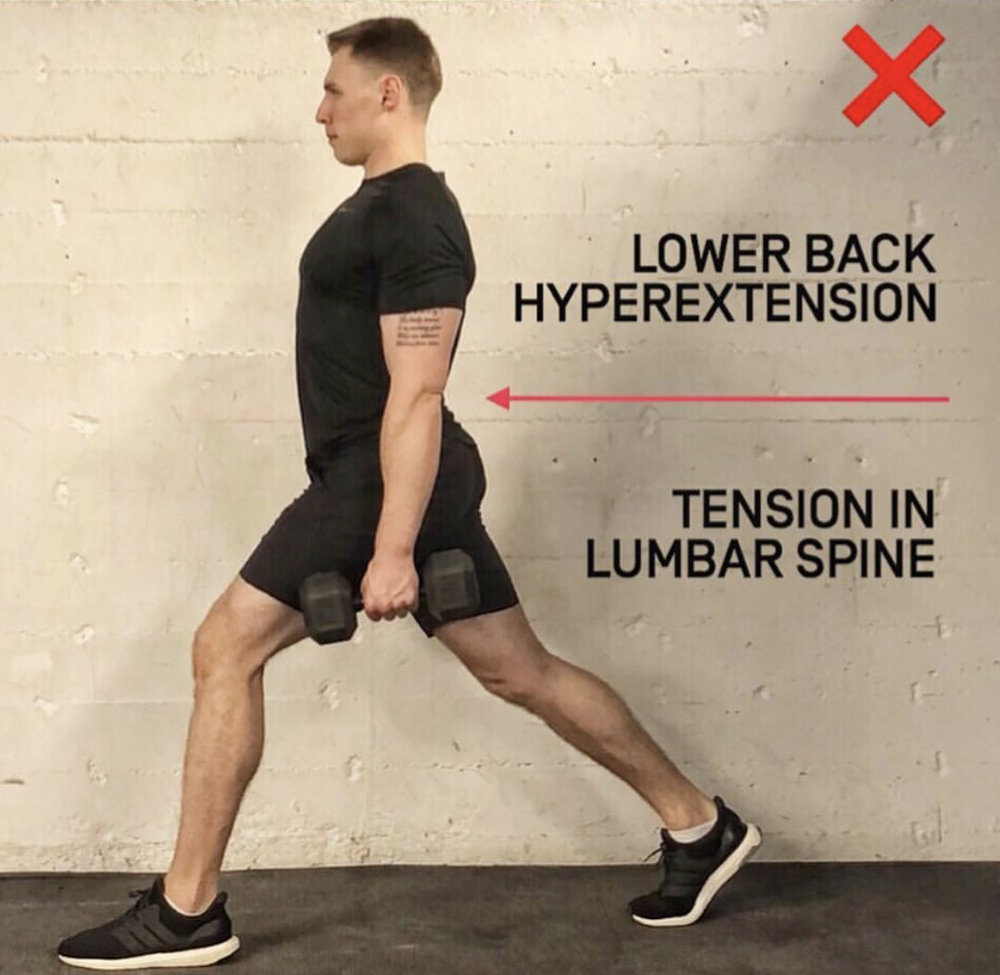
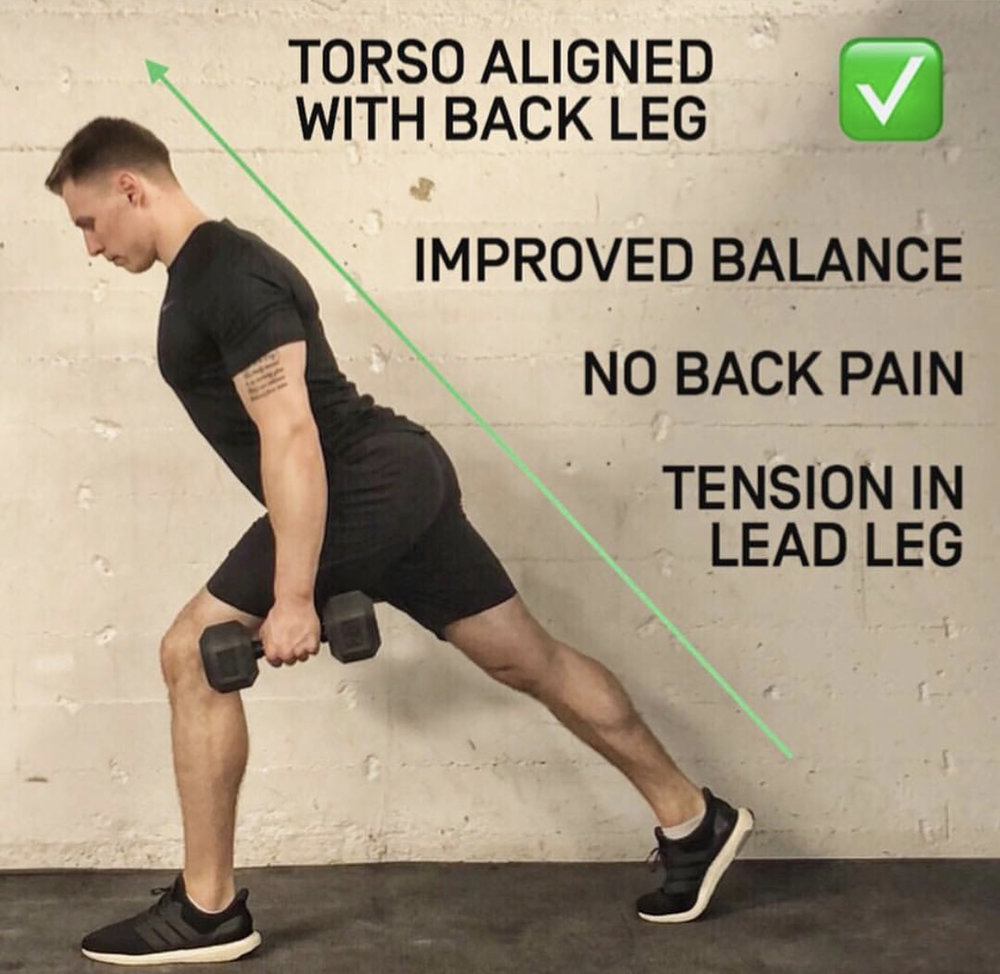
How to fix it…
To avoid this, try tilting forward at the hip, keeping your chest above your lead knee. By keeping your torso and rear leg the same angle, you will eliminate any hyperextension in the lower back. You’ll also have way more balance and create more tension in the lead leg. You can use this for any type of lunge variation (reverse, split, walking, and others).
MISTAKE #2 : RAISING THE HEEL OFF THE GROUND
All of your strength is generated from the ground up, when it comes to any exercise. If you don’t have any base in your feet, you won’t be able to perform the exercise as efficiently as you potentially could.

A common mistake is raising the front heel off the ground during lunges. This is usually caused by one of, or both, of the following factors:
- Limited ankle mobility: Remember, your ankles need to be able to travel through a certain amount of dorsiflexion when performing lunges. When you go down into your lunge, your front ankle is going to flex as you bend your knee. If you don’t have the mobility in your ankle to bend it through dorsiflexion, your front heel is going to raise off the floor to try to allow your knee to bend. This is a common issue for women who wear heels to work since their feet are in plantar flexion throughout the day. Make sure you’re incorporating ankle mobility drills into your routine to avoid compensation in lunges and other big movements like squats and deadlifts.
- Too short of a stride: SImilarly, when you take too short of a stride during your lunge (step too close), you’re increasing the demand on your ankles. The shorter your stride length is during lunges, the more dorsiflexion your ankles have to be able to travel through. The longer your stride is, the less dorsiflexion they have to go through. You need to find a middle ground that is optimal for you and your body. Too short of a stride and your heel may raise off the floor, causing you to lose balance and optimal muscle recruitment from the glutes. Too long of a stride and you will hyperextend the lower back and push the hips forward excessively.
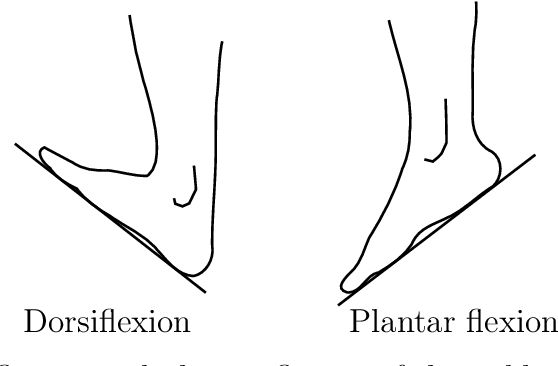
How to fix it…
Incorporate ankle mobility drills into your regular routine. This is easily the most commonly overlooked area of the body that can have the biggest impact on your performance when given the proper attention it deserves.
Try some of the following drills for yourself before and after your workouts:
MISTAKE #3 : KNEE CAVE (VALGUS COLLAPSE)
This is a common issue you’ll see not just in lunges, but squats and deadlifts as well. This is when your knees “buckle” or cave in towards the centre of your body. Valgus collapse is a weak and vulnerable position, no matter which exercise you’re doing. So if you experience this during lunges, you want to take appropriate measures to fix it as to avoid potential injury.
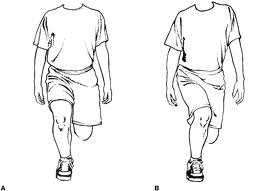
Common causes for valgus collapse include:
- Weak hips and glutes: Your hip flexor muscles and glutes (glute medius, minimus, maximus) help stabilize the femur (thigh). Weak support from these areas will cause the knee to drift inward.
- Restricted ankle mobility: I probably sound like a broken record, but I don’t care. Ankle mobility is vital to your performance in the gym, especially when it comes to lunges. Limited ankle range of motion will cause unwanted tension buildup along the front of the knee (patellar tendon), causing the tibia (shin) to rotate inward, along with internal hip rotation which leads to valgus collapse.
- Weak hamstring function: Your hamstrings (semimembranosus and semitendinosus) are one of the prime supporters of the knee. Inactive or inadequate hamstring function will weaken knee stabilization.
- Weak quad function: Your quads also play a vital role in knee stabilization, especially during movements such as lunges. Weak VMO (tear drop muscle next to the knee) function will cause the knee to drift inward, especially during unilateral exercises, such as lunges, that call for adequate quad strength to support the knee.
How to fix it…
- Work on external hip rotation.
- Strengthen your glutes (especially glute medius).
- Improve ankle mobility (duh).
- Strengthen VMO/quad muscles.
Try some of the following exercises to improve/eliminate valgus collapse.
Perform 10-15 reps per side for 2-3 sets to focus on vertical shin angle to strengthen the glutes.
Perform 15-20 reps for 2-3 sets per side as part of your warm up to activate the VMO before big movements like lunges for better knee support.
Perform 8-10 reps for 2-3 sets as part of your warm up to active the glutes. Focus on flat hips and pressing your pelvis against the bench throughout the entire movement to isolate the glutes.
This is an awesome, but challenging, exercise to improve external hip rotation and glute med activation. Focus on keeping your torso as upright as possible and sitting at the bottom of the squat for a 2-3 sec isometric hold. Perform 10-12 reps for 2-3 sets as part of your warm up.
If you have any questions or comments about this article, shoot me a message down below!




